10 archaeological discoveries
prove the reliability of the Gospels
Before saying that people don’t believe in Christianity because there are no tangible elements or sufficient evidence, read this article carefully. Some historians, who once firmly identified as atheists, changed their minds after an in-depth study of these objects. Unlike other belief systems, Christianity claims that we can test our convictions in the light of History. What is fascinating about the biblical writings is that we know the places, the people, and the events mentioned are real: they are historically verifiable. Not only do these elements strengthen the faith of Christians, but they also help us correctly interpret the biblical writings.
Christianity is faith in evidence; it is faith founded on proof. It is a belief system that is tried, verifiable, and testable. We do not blindly believe in a God; our faith rests on evidence, on elements of proof to which God has given us access.
1. The Cup of Alexandria (the Cup of Jesus, the “Magician”)

A ceramic cup was discovered in the port of Alexandria a few years ago. On this cup, the following inscription can be read: “The magician obtains his powers through Christ.” More precisely, it bears the words: “DIA CHRSTOU O GOISTAIS,” translated as “The magician acts and speaks through Christ.” This cup is believed to predate the time of Jesus, while the inscription would date from the mid-first century (just after the death of Jesus). According to historians, the fame of Jesus and the miracles He performed were so great that some individuals, practicing religious rites, used His name in the hope of gaining some kind of power.
This discovery is incredible because it not only demonstrates the existence of Jesus but also shows that He was seen as a “powerful” and “popular” figure throughout the Mediterranean basin.
2. The Cursed Tablet
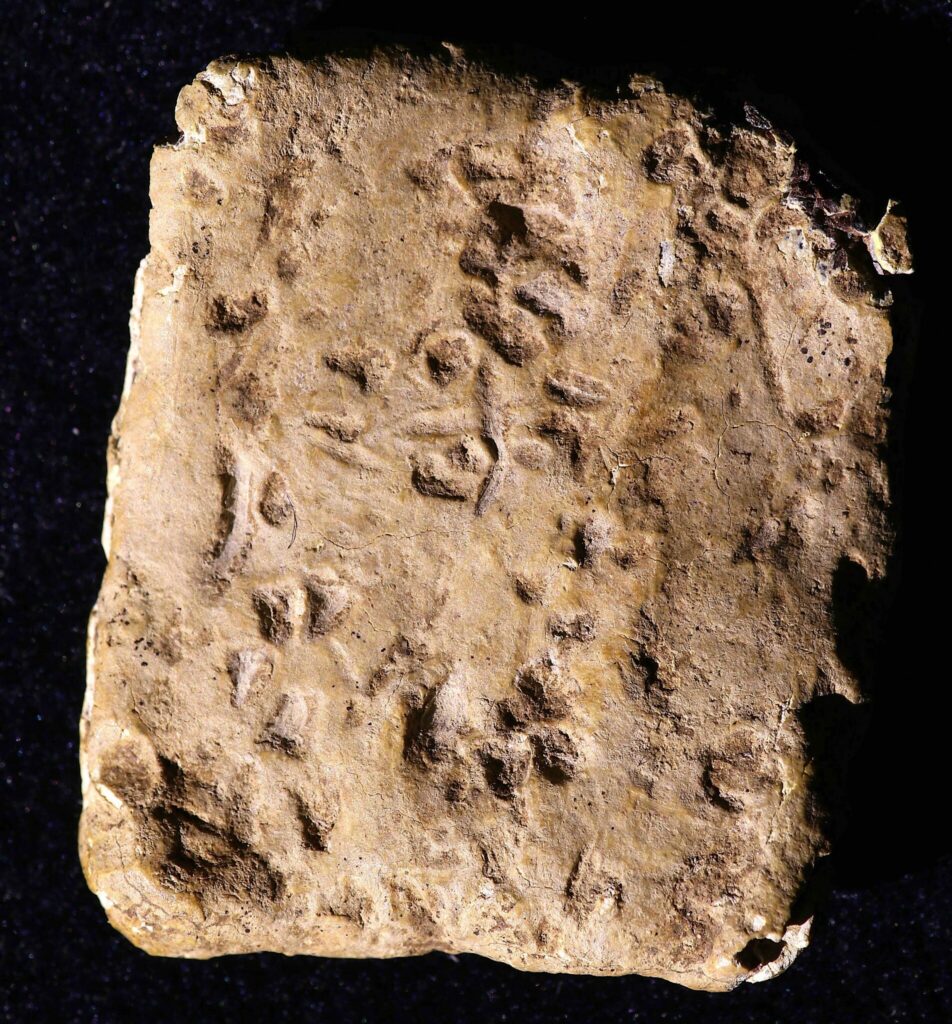
A 3,000-year-old lead tablet discovered on Mount Ebal, in Israel
In the book of Deuteronomy, it is written that the people of Israel would be cursed by the Lord, Yahweh, if they did not keep His commandments. Conversely, they would receive His blessing if they followed them.
“See, I am setting before you today a blessing and a curse […] you shall proclaim the blessing from Mount Gerizim and the curse from Mount Ebal.” (Deuteronomy 11:26-29)
In 2019, Scott Stripling, director of the Institute of Archaeological Studies at the Bible Seminary in Katy, Texas, unearthed a mysterious lead tablet engraved with indecipherable inscriptions in Paleo-Hebrew. The object was sent to Prague, where advanced imaging techniques made it possible to produce a 3D model of the tablet, thus facilitating the deciphering of the text. With the help of four other researchers from the Czech Academy of Sciences, Stripling used cutting-edge scientific methods to reveal the content of these ancient inscriptions.
At a press conference, the researchers revealed that the word “curse” appeared ten times, while the divine name “YHWH,” in its biblical spelling, was mentioned twice. The tablet would therefore declare:
“Cursed, cursed, cursed – cursed by the God YHWH. You will die cursed. Cursed, you will surely die. Cursed by YHW – cursed, cursed, cursed,” according to the translation proposed by the specialists.
This tablet is not only the oldest known trace of Paleo-Hebrew writing ever found in Israel, but it was also discovered precisely on Mount Ebal. This detail is remarkable because, according to the Bible, it was on this very mountain that the curses were to be proclaimed — and it is there that a tablet referring to them was found.
Such a discovery therefore reinforces the historical credibility of the biblical accounts, which are often questioned. It demonstrates, once again, that the texts of the Bible are rooted in a very tangible reality.
3. The P52: An Unprecedented Fragment of the Fourth Gospel, the Gospel of John

A treasure rescued from the trash heaps of history
Who would go looking for something valuable in an old dump? Usually, when we think of a pile of garbage, we imagine filth, a bad smell… certainly not an exceptional discovery. And yet, it was right in the middle of waste abandoned for centuries that a tiny fragment of text was found — a fragment that would fascinate Bible scholars.
An unexpected find in the Egyptian sand
At the end of the 19th century, two British scholars, Bernard Grenfell and Arthur Hunt, were excavating the remains of ancient Egyptian cities. There, in what looked like heaps of refuse, they uncovered hundreds of pieces of papyrus — texts written a very long time ago.
A few years later, one of these fragments made its way to the John Rylands Library in Manchester. Another scholar, Colin Roberts, then came across a tiny piece of papyrus, about the size of a business card. Looking more closely, he recognized Greek words from the Gospel of John, one of the accounts of the life of Jesus in the New Testament.
One of the oldest Christian texts in the world
What Roberts was holding in his hands was perhaps one of the oldest fragments of the Bible ever discovered. By comparing the handwriting with other ancient documents, and after consulting several experts, he came to an astonishing conclusion: this tiny piece of text could date back to the early 2nd century, only a few decades after the death of the apostle John, the author of the text.
Why this matter
This fragment, small as it is, reveals two fascinating things. First, it shows that the early Christians were already seeking to spread the biblical texts. The papyrus is written on both sides — which indicates that it was part of a codex, a kind of early book, easier to read and carry than a scroll. An ideal tool for those who wanted to share their writings quickly.
Second, this text confirms that the message of the Bible has been copied with remarkable accuracy. Despite time, copies, and translations, the few verses present on this papyrus are almost identical to the ones we read today.
It goes to show that even a small piece forgotten at the bottom of an ancient dump can tell an extraordinary story — that of a text that has crossed the centuries without losing its message.
4. The Alexamenos Graffito

This graffito dates from a period between the 1st and 3rd centuries. It was discovered in 1857, among many other items, during the excavation of the remains of the Domus Gelotiana in the imperial palace of Rome. It is a drawing considered the oldest known depiction of the crucifixion of Jesus. This image, caricatural in nature, shows a human figure on a cross, but with the head of a donkey. To its left, another figure appears to be making a gesture toward it, resembling either a salute or a prayer. The inscription accompanying the scene reads: “Αλεξαμενος ϲεβετε θεον.” In rough or even phonetic Greek, this means: “Alexamenos worships his god” or “Alexamenos worships God.” Why a donkey’s head? At the time, the donkey’s head was used to mock the God of the Jews. Since Christianity was then seen as a Jewish sect within the Roman Empire, this depiction was most likely intended to ridicule the emerging Christian faith.
This graffito is preserved in Rome, at the Palatine Museum.
Skeptics often claim that the Gospels cannot be considered reliable historical documents. Yet this claim is mistaken. In reality, the Roman crucifixion of Jesus is one of the best-attested and most widely recognized events of antiquity among historians. The image we see here further supports what the texts report: Jesus was crucified, He was mistreated, and His disciples were persecuted. The persecution of Christians was beginning to spread throughout the Roman Empire, and this depiction perfectly illustrates the type of document one would expect to find in a context of rejection: Christians were mocked for their worship of a crucified man, as is the case here.
It is also striking to note that the oldest known iconographic document related to Jesus shows Him precisely as crucified and ridiculed — an indirect yet powerful testimony of how He was perceived by His contemporaries.
5. The Crucified Heel
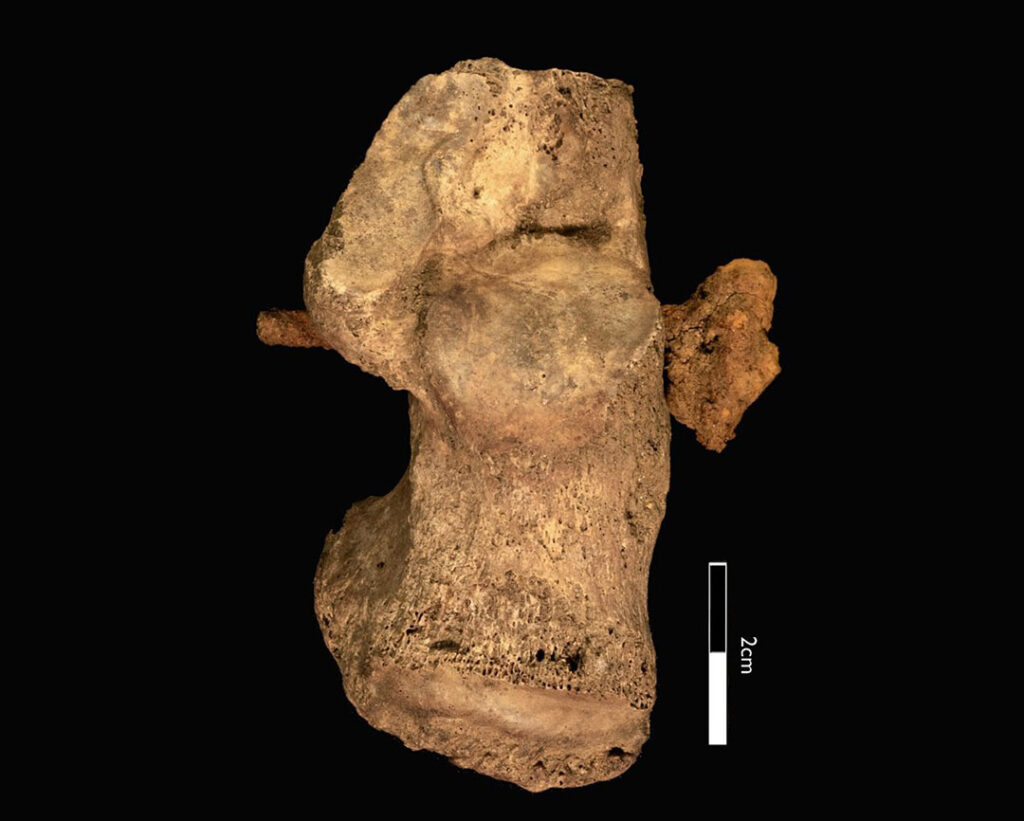
A surprise that was both macabre and fascinating awaited the anthropologist tasked with studying these bones: the two heels, belonging to an adult skeleton, were pierced through by a large curved iron nail, about 7 inches long. Between the head of the nail and the right heel, remains of acacia or pistachio wood were identified; whereas between the left heel and the curved end of the nail, analysis revealed the presence of olive wood. There was therefore no doubt that this was the body of a crucified man from the Roman era, probably contemporary with the life of Jesus. The study of the tibias shows that the crucified man’s legs had been violently broken. The right tibia seems to have received the most brutal blow, as it was shattered into multiple fragments; the left tibia, on the other hand, shows a single jagged fracture. The wrist bones bear no trace of nails, but scratches are clearly visible on the right radius. These are probably the marks left by the nails, whose placement must have been higher up the arm than the wrist.
This positioning of the nails in the arms implies that a small seat was placed under the buttocks of the condemned man, because without this support, the weight of the body would have torn through the arms.
This method of executing condemned criminals is well known historically, as it is mentioned in ancient texts. As early as the reign of Alexander Jannaeus (103–76 B.C.), crucifixion was commonly practiced; this policy of the Jewish rulers simply continued under Roman rule. According to the testimony of Flavius Josephus, Pontius Pilate does not seem to have hesitated to resort to this form of punishment.
6. The Ossuary of James
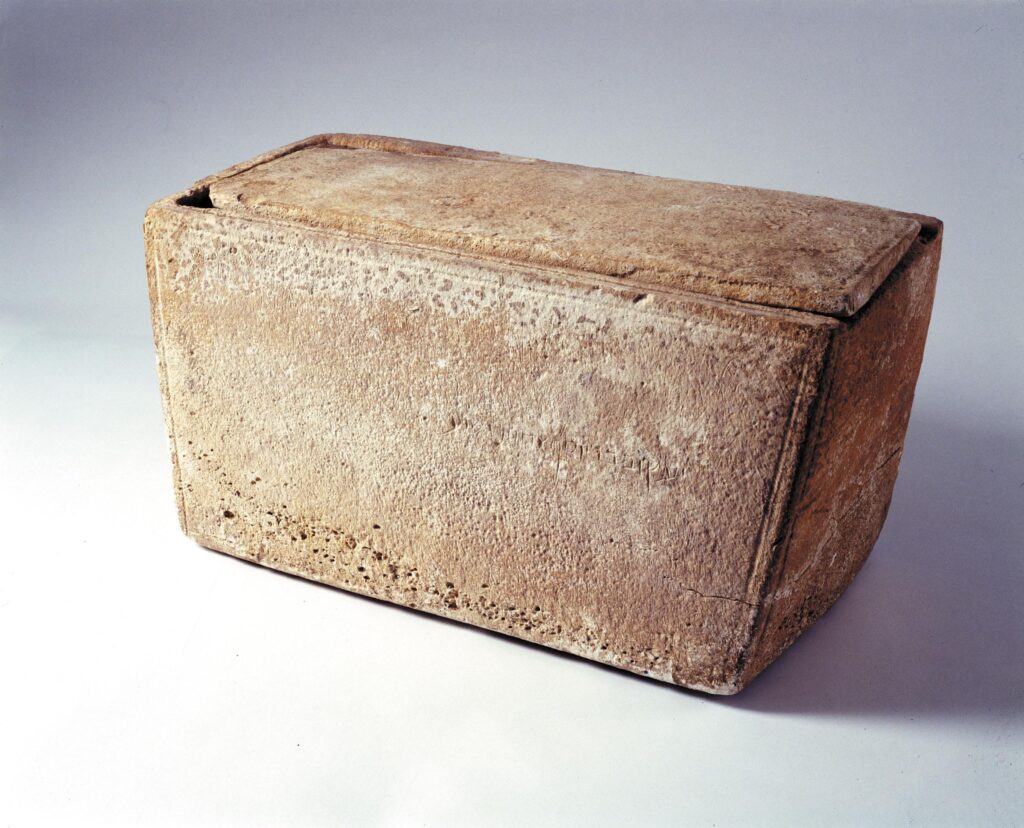
Between the 1st century B.C. and the year 70 A.D., in Judea and Galilee (especially around Jerusalem), people had the custom of collecting the bones of their deceased relatives to place them in small stone boxes called ossuaries, which were then buried in tombs. Nearly 1,000 from that period have been found, and about a quarter of them bear inscriptions. Even though many were looted before being studied, they can still teach us a great deal.
One ossuary in particular attracted attention: that of James. It was purchased under somewhat unclear circumstances, but it is known to have belonged to a collector in Israel before being presented to the public in 2002.
On the side, an inscription in Aramaic (the language spoken at the time) can be read:
✅ “James, son of Joseph, brother of Jesus.” This text has sparked much debate. Some believed it to be a forgery, but after years of analysis, many specialists today consider both the ossuary and the inscription to be authentic. The box, made of Jerusalem limestone, measures about 50 cm in length, and its surface shows that it was indeed buried in a tomb in the region. The style of the writing also allows it to be dated to the 1st century, therefore contemporary with Jesus. Now, James, the brother of Jesus, is mentioned in several texts of the Bible: the Gospels, the Acts of the Apostles, 1 Corinthians, the Epistle to the Galatians, as well as in Jude, and he is even believed to have written a letter known as the Epistle of James.
Researchers also conducted a statistical analysis of the names. At the time, it was very rare to mention a brother on an ossuary, and the names “James,” “Joseph,” and “Jesus” together likely refer to a single identifiable person in all of Jerusalem at that moment. The writings of Flavius Josephus also report the martyrdom of James in Jerusalem around 62 A.D. and confirm his relationship to Jesus, which suggests that his remains could indeed have been placed in an ossuary before 70, in Jerusalem.
7. The Pilate Inscription (the Pilate Stone)
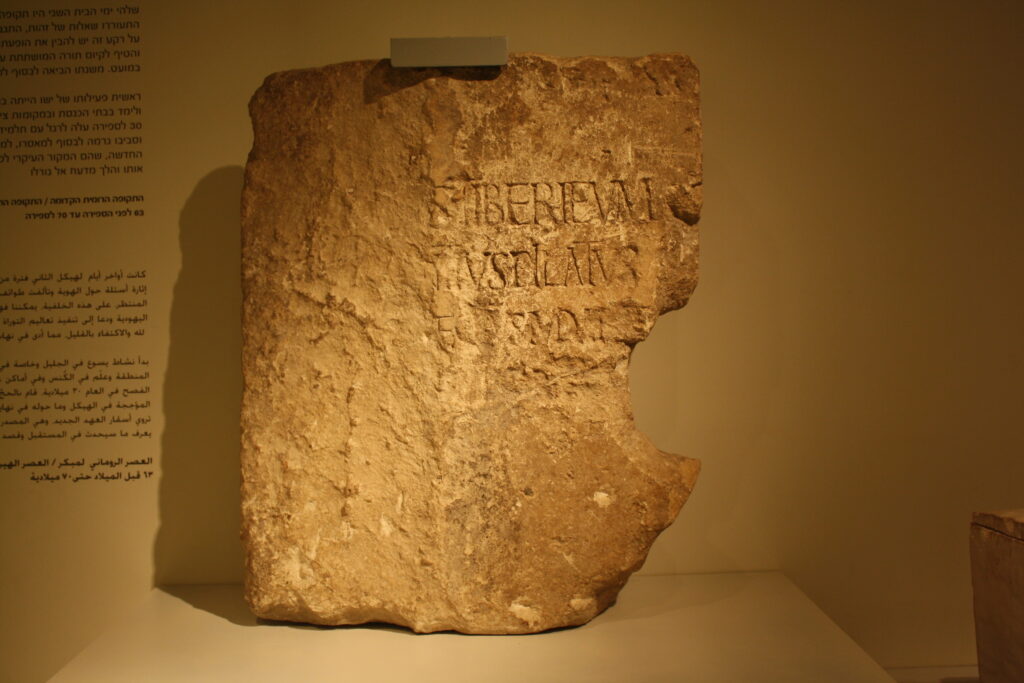
This inscription confirms that Pilate held the title of Roman prefect, and not that of procurator, as mentioned by Tacitus in the famous passage of the Annals, where he describes the persecution of Christians under Nero following the great fire of Rome. It is likely that Pontius Pilate resided in Caesarea, a city that had replaced Jerusalem in the year 6 as the administrative capital and military headquarters of the province. The so-called “Pilate Inscription” is now kept at the Israel Museum in Jerusalem. Replicas of the stone block can be found at the Archaeological Museum of Milan, in Italy, as well as at the archaeological site of Caesarea Maritima.
This discovery once again confirms the reliability of the biblical accounts: Pontius Pilate is not a fictional character. He truly existed, and archaeological excavations reinforce the historical validity of these texts.
8. The Nazareth Inscription, or the Nazareth Tablet

A marble tablet kept at the National Library of France, measuring about 59 × 36 × 6 cm, has recently aroused great interest. Known as the Nazareth Inscription (or the Nazareth Tablet), it has been cited as potential archaeological evidence related to the biblical accounts of the resurrection of Christ. However, recent studies suggest that this tablet may not be directly linked to the origins of Christianity.
It is precisely this possible connection with Christianity that, for a long time, gave this tablet great significance. It was acquired in 1878 by Wilhelm Froehner, at a time when archaeological discoveries were not yet systematically documented. Froehner’s only notes indicate that it was “sent from Nazareth,” the town where Jesus grew up and spent much of His life.
The tablet contains 22 lines of Greek text, engraved on the front in capital letters. The text presents itself as a “Decree of Caesar” (diatagma Kaisaros) and prescribes the death penalty for anyone who would remove a body from a tomb with malicious intent.
The text also mentions sepulchral stones, which were particularly common in Israel. Many researchers believe that the “Caesar” who issued this rescript (an imperial response to an official request) was Emperor Claudius, who reigned from 41 to 54 A.D.
9. The Dead Sea Scrolls
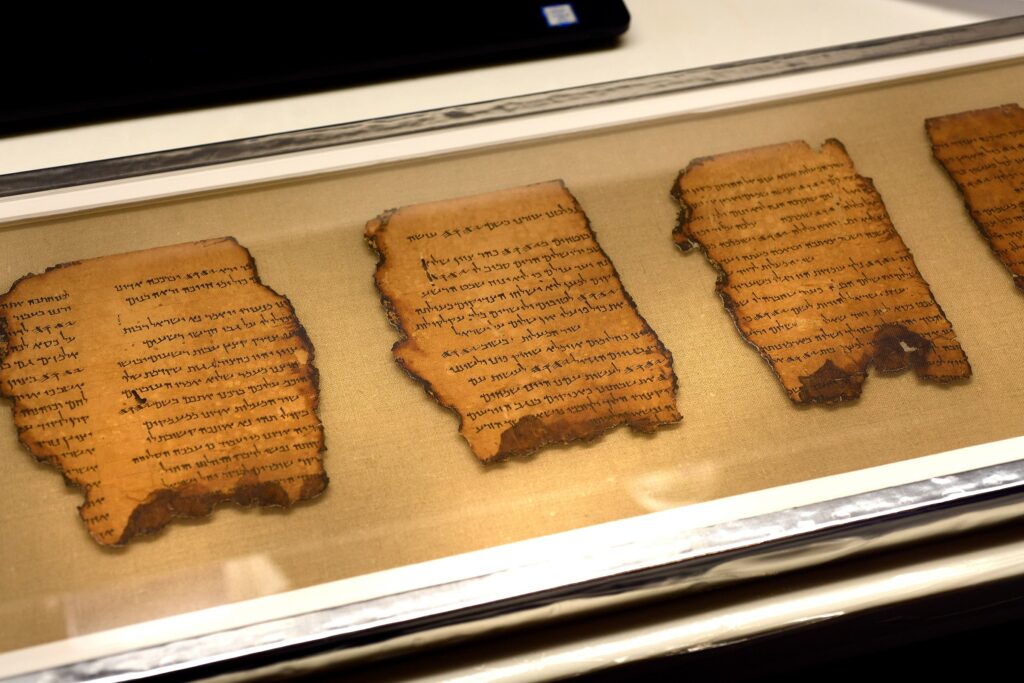
This is a collection of scrolls and papyrus fragments written mainly in Hebrew, but also in Aramaic and Greek. These manuscripts were discovered relatively recently, in the 1940s. They contain not only biblical accounts but also non-biblical books and writings “outside” the Bible. They are attributed to the Essenes, a group that lived near the Dead Sea, outside the city of Jerusalem.
The most iconic of the discovered manuscripts is the Great Isaiah Scroll. It is the best-preserved of the scrolls found and contains the entirety of the 66 chapters of the book of Isaiah. These manuscripts have been remarkably protected and preserved despite their age — they survived for 2,000 years!
Why is this discovery so significant in the world of archaeology?
The reason is simple: these manuscripts show us that the Old Testament accounts we have today are reliable, because there is virtually no difference between the version in our Bible and the texts that were found. It is often said that the Bible has been corrupted, that it has passed through too many hands and that its content must have been altered, and that our version has nothing to do with the original. What is fascinating about these discoveries is that we have in our hands the original version of our biblical texts. By comparing these very ancient manuscripts to later copies of the same books, we see that the differences are extremely minor. No major changes appear in the text, which means that the message has been preserved with authenticity and accuracy.
It is one of the most extraordinary archaeological discoveries in existence.
10. The Shroud of Turin

First of all, what is a shroud? It is simply a garment, often made of linen, in which the body of a deceased person was wrapped. Why Turin? Turin is a city in Italy, and that is where the shroud is located.
It is possible to go see it directly in Italy. However, if you cannot travel or if curiosity does not lead you to do so, you can freely find images of this object on the Internet.
So, what do we see? A body, or more precisely, the silhouette of a body. The shroud has a front and a back: you can therefore see both the front and the back of a body.
An unexplained phenomenon:
Many people argue that it is a forgery. The problem is that to this day, no one has been able to reproduce the phenomenon that creates these marks and impressions on the fabric. No scientist has been able to duplicate it, and this remains absolutely fascinating, especially from a scientific point of view.
But then, what is this “phenomenon” that experts cannot explain or reproduce? Here is the heart of the mystery: if you visit Turin today and observe the shroud up close, here’s what you’ll notice: standing less than 3 meters away, you won’t perceive the silhouette of the body. However, if you step back more than 3 meters, the mysterious silhouette appears through the fabric.
No one has been able to explain this phenomenon, and scientists are incapable of reproducing a similar effect. It is unknown how these marks could have formed on the shroud, because there is no ink, pigment, or paint… In reality, it is as if you are looking at a negative (a photo where the colors are inverted). This makes the shroud a true mystery and an archaeological treasure.
A crazy amount of energy: If you’re a fan of the movie Back to the Future, you might remember the energy needed to power the DeLorean. Think about it—I’ll come back to this a bit later… The body wrapped in the shroud, at a precise moment, generated a super-powerful flash of light: scientists who studied the shroud estimated this burst of energy at 6.4 gigawatts, that is six times the energy the DeLorean needed to travel to the future (which is already pretty wild, even for a movie!). It’s the equivalent of 600 million LED lamps! This flash “photographed” the silhouette on the shroud’s fabric.
This obviously seems like an absolutely crazy measurement, which adds to the unique and inexplicable nature of this object. It’s certain and understandable that the Shroud of Turin stirs up so much passion. It is an object that leaves no one indifferent and continues to attract huge crowds every year.
Scientist Barrie Schwortz is part of that crowd. A member of the 1978 research project on the Shroud of Turin, Barrie converted to Christianity at the end of his studies.
When observing this shroud… could we be facing the very moment when Jesus was resurrected? The moment when He transcended death, as the ancient texts recount?
Here’s an interesting fact: in recent years, a man issued a challenge—to prove that the Shroud of Turin is a hoax, a “fake.” In exchange, whoever reveals the fraud will win 1 million dollars. To date, despite the attractiveness of this offer, no one—scientists or archaeologists alike—has succeeded in meeting the challenge.
So, are you ready to behold the shroud yourself and unravel its mysteries?
